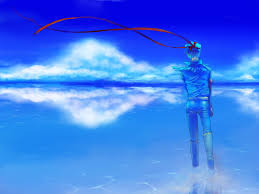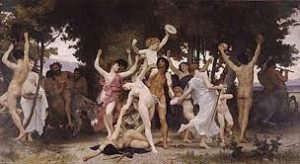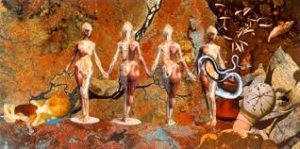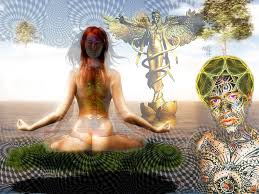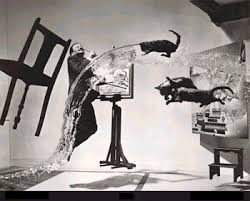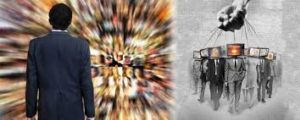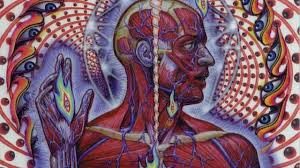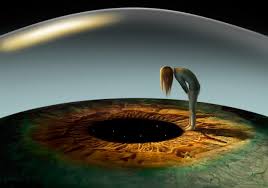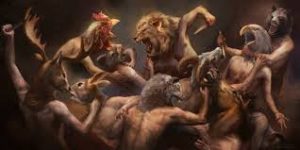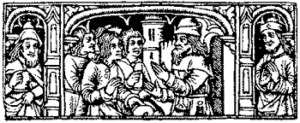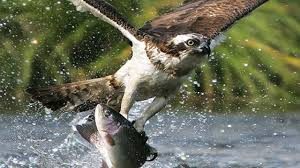These knower selves represent the greater source-selves out of which our present persons spring. We possess far more knowledge about our own lives, and the lives of others, than we were intellectually aware of. We act on that knowledge, for one thing, when we are born physically, when we grow. The squirrel acts on that kind of knowledge when it buries nuts and the squirrel’s greater knowledge includes the knowledge of its species as well.
Knower represents the part that possesses such knowledge. In practical terms, it is very important to understand that such knowledge and protection do exist, that all of our problems need not be solved through conscious reasoning alone — and, indeed, few problems can be solved exclusively in that fashion.
Our work is protected, not only because it is one of our projects, but also because in a fashion it becomes its own kind of entity — a well-intended one that exists in a rather concentrated form, distilled from our own best aspirations. Hence it is also filled with energy, and also becomes a collector of it.
I do not want to become involved in a confusion of terms. The mind’s powers are far greater than those generally assigned to rational thought alone. Rational reasoning, overdone, can for example actually limit practical use of the intellect’s faculties, and therefore serve to dim some of the mind’s scope. In a fashion, again, Knower represents the true capacity of the mind’s functioning, the kind of instant comprehension that is behind both the intuitions and the intellect’s activities. We are dealing, then, with the spacious intellect, the knower.
That knower in instantly aware of all our needs, and is the portion of the universe that is personally disposed in our direction, because it’s energies form our own person. That protection always couches our existence. We can be unaware of that state. We can deny it or refuse it, but we are within it regardless. It forms the very fabric of our individual beings. Value fulfillment means that each individual, each entity, of whatever nature, spontaneously, automatically seeks those conditions that are suited to its own fulfillment, and to the fulfillment of others.
In the most basic of terms, no one’s fulfillment can be achieved at the expense of another’s. Fulfillment does not happen that way. Our very lives seeks the best directions for fulfillment. Our work seeks its own best direction for fulfillment.
When we realize this, then we can accept seeming setbacks, or seeming contradictions, with a calm detached air, realizing that such factors appear as they do only in the light of our present intellectual knowledge — a knowledge that must be limited to current events — and that in the larger picture known to us at other levels, such seeming contradictions, or seemingly unfortunate situations, or whatever, will be seen, at that intellectual level, so if we base all our judgments — all or our judgments — at that level alone, then we can be quite short-sighted.
We are dealing with the psychology of experience, however, so we ourselves alter the situation according to our own reactions. If we feel threatened by certain situations, and lacking protection, then we will take certain steps that might not be taken otherwise, so our actions are vastly different according to whether or not we realize that we are indeed being protected.
If we build up feelings of threat, then at our level we also react to those. The protection exists, but in such cases we do not allow ourselves to take full advantage of it.
The ideas for inventions, tools or products exist mentally, to be brought into activation whenever they are required, say, by circumstances, or by the environment.
Various tribes in different parts of the earth would suddenly begin using new tools, say, not because there might be any physical communication among them, or cultural exchanges, but because separate conditions in their own environments triggered mental processes that activated the particular images of the tools required for a given job at hand. The information, which was non-physical, was then transformed into practical knowledge either from inner visual imagery by itself, or through the state of dreaming.
Dreaming have always served as such a connective. We know more about our life than we think we do — and far more about our life and society than we are intellectually aware of. Early man and woman was in that same position, and his or her inventions — his/her tools, his/her artistry, and so forth — came into being from the inner, ever-present realm of the mind, triggered by his/her unconscious but quite real estimation of his or her position within the universe at large, and in regard to his or her own environment.
In a fashion, cultures do not evolve in the kind of straightforward manner that is usually supposed. Of course, cultures change, but man instantly began to fashion culture, as for example beavers instantly began to form dams. They did not learn to form dams through trial and error. They did not learn for untold centuries build faulty dams, for example. They were born, or created, dam makers.
Man and woman automatically began to form culture. He or she did not start with the rudiments of culture, as is thought. He and she did not learn through trial and error to think clear thoughts. He and she thought quite clearly from the beginning. He and she did learn through trial and error various ways of best translating those thoughts into physical action. The first cultures were as rich as our own. In our terms, reading and writing are great advantages, but it is also true that in the past the mind was also used to record information, and transmit it with an artistry that we do not use.
Memory was so perfected that men and women at one time were indeed living histories, and carried within their minds their genealogies and backgrounds and the knowledge of their peoples, which were then passed on to their children. It is true that reading and writing have certain advantages over such procedures, but it is also true that knowledge possessed in that old fashion became a part of man and woman, and a society, in a much more personal, meaningful manner. It was, of course, a different kind of knowing. At its best it did not lead to rote renditions of remembered material, but to dramatic renderings of it through music, poetry, dancing. In other words, its rendition was accompanied by creative physical expression. It is true that, practically speaking, a man’s or woman’s mind, could not hold all of the information available now in our world — but much of that information does not deal with basic knowledge about the universe or man’s or woman’s place within it. It is a kind of secondary information — interesting, but not life-giving.
Man and woman did not have to learn by trial and error what plants were beneficial to eat, and what herbs were good for healing. The knower in him and her knew that, and he and she acted on the information spontaneously. The knower is of course always present, but the part of our culture that is built upon the notion that no such inner knowledge exists, and those foolish ideas of rational thought as the only provider of answers, therefore often limit our own use of inner abilities.
We end up with, if all goes well, a kind of “new” illuminated consciousness, an intellect who realizes that the source of its own light is not itself, but comes from the spontaneous power that provides the fuel for its thoughts.

